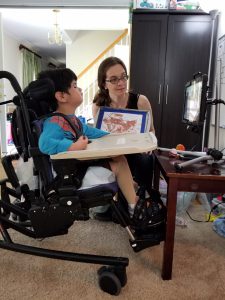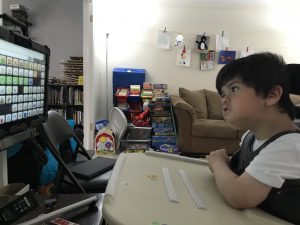 Most of our parents don’t have to choose a language for us. We are automatically immersed in the language of our community, and that becomes the language we will take on as our own. We’ll use our parents’ words to communicate our wants and needs, socially connect, share ideas, and tell jokes. We may choose to learn another language, but our baseline communication is based on those around us.
Most of our parents don’t have to choose a language for us. We are automatically immersed in the language of our community, and that becomes the language we will take on as our own. We’ll use our parents’ words to communicate our wants and needs, socially connect, share ideas, and tell jokes. We may choose to learn another language, but our baseline communication is based on those around us.
For students who have difficulty accessing their community’s communication methods, their families are often left with choices. Families are left with decisions of how their child will access language, what methods the child will use, and who that child will be able to interact with while accessing that language. [Read more…]

 Over my 16 years as an educator I’ve learned one valuable lesson: Never underestimate the power of a cute baby animal. This has proved true for working with angry five year olds who have difficulty regulating their emotions (somehow looking at pictures of baby animals can sometimes immediately cause a child to relax).
Over my 16 years as an educator I’ve learned one valuable lesson: Never underestimate the power of a cute baby animal. This has proved true for working with angry five year olds who have difficulty regulating their emotions (somehow looking at pictures of baby animals can sometimes immediately cause a child to relax).  ce was returned a few weeks ago,
ce was returned a few weeks ago,  Joey’s AAC device is back! It’s wonderful to be able to hear his ideas and thoughts again. When we were reading Click, Clack, Surprise, he used it to tell me that the messy little duck needed a mirror.
Joey’s AAC device is back! It’s wonderful to be able to hear his ideas and thoughts again. When we were reading Click, Clack, Surprise, he used it to tell me that the messy little duck needed a mirror.  Early this fall we recognized that as Joey’s communication was increasing, his types of communication were increasing as well. We began taking data on how often he made demands, made social overtures, shared observations about his world.
Early this fall we recognized that as Joey’s communication was increasing, his types of communication were increasing as well. We began taking data on how often he made demands, made social overtures, shared observations about his world.
